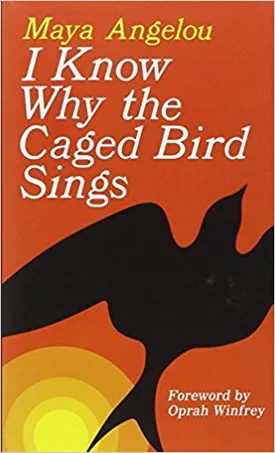I Know Why the Caged Bird Sings by Maya Angelou
Written during the height of the civil-rights movement in the United States, I Know Why the Caged Bird Sings has fast become a classic. Written by Maya Angelou, first published in 1969, and since having being translated onto stage and screen, I Know Why the Caged Bird Sings is an autobiography which tells the story of Angelou’s early life and deals with the unresolved issues of sexuality, rape, racism and identity which have surrounded Angelou’s life.
The novel begins with the now-famous lines ‘What you looking at me for? I didn’t come here of myself’, before narrating the childhood of Maya, a black girl living with her brother and grandmother, who move from the impoverished area of Stamps, Arkansas to the town of St. Louis, Missouri. In St. Louis, Angelou is enthralled by a local church by which she is inspired to discover her own personal spirituality, seen through her affection of the life of Jesus Christ. It is at this same church where Angelou begins to read and throughout the novel she reads countless books which make a huge impact on her life since.
The novel contains numerous stories which illustrate Angelou’s early life, ranging from her experience at a segregation school in Stamps, to her struggle with her own sexuality and rape at the age of eight. These experiences have a major impact on Angelou’s life and she is forced to grapple with her complex feelings of grief and identity in the wake of these traumatic incidents.
In light of Angelou’s various struggles, I Know Why the Caged Bird Sings also provides a source of comfort and solace throughout. Angelou is able to take strength from her friendships with her brother and grandmother, as well as the works of writers such as William Shakespeare, that bring her moments of renewal and peace.
The title of the novel is a metaphor for Angelou’s own experience of oppression and withholding, as the ‘caged bird’ refers to her confinement by the social and economic limits of her life. However, despite the odds Angelou prevails and is able to rise above them, symbolised in the narrative by the repeated image of the free bird.
The recurring motif of music also presents itself throughout I Know Why the Caged Bird Sings. Music is first used by Angelou’s grandmother to express both joy and sadness as a form of self-expression, before Angelou later uses it as a way of conveying her own personal story. It is through music that Angelou is able to communicate her innermost feelings, a form of embodiment which she describes as ‘transform[ing] the oppressor’s song into a true freedom song’.
I Know Why the Caged Bird Sings is an autobiography which endures and resonates over fifty years after it was first published. It is an incredibly powerful and deeply moving novel which explores the complexities of racism and identity. Angelou’s indelible message of resilience in the face of adversity, tempered with hope and unbending faith in the power of the human spirit, makes her one of literature’s most important and influential authors.

